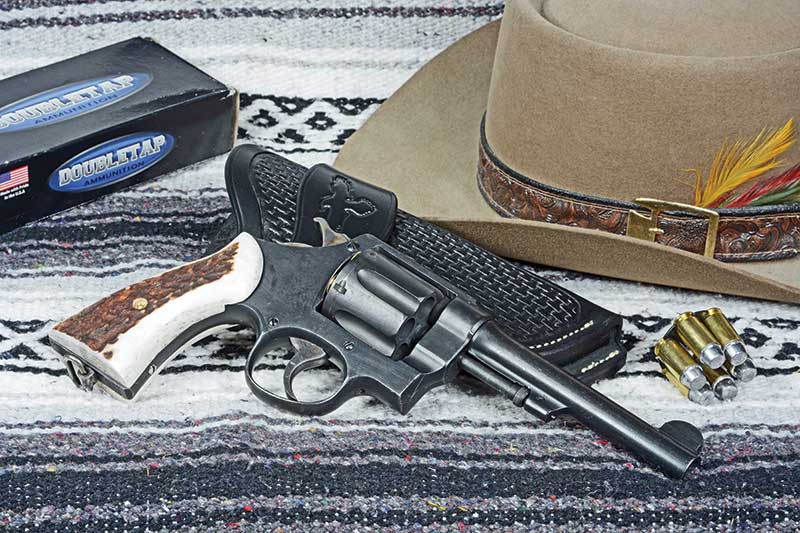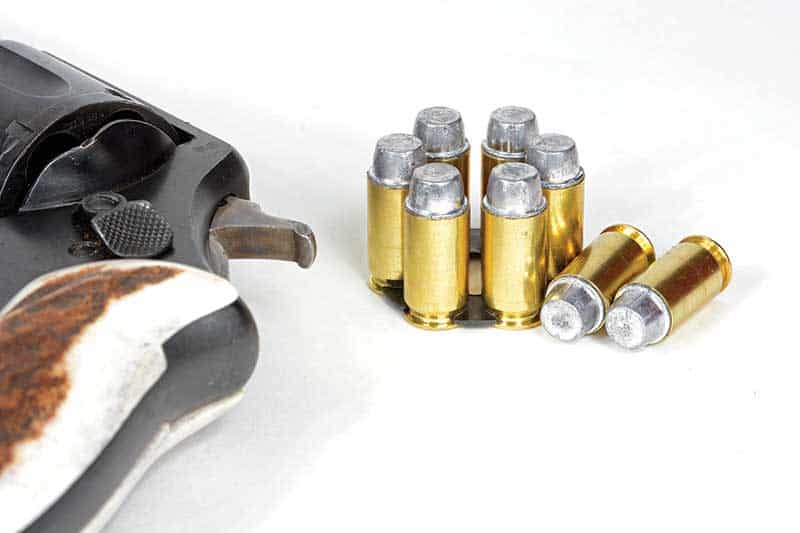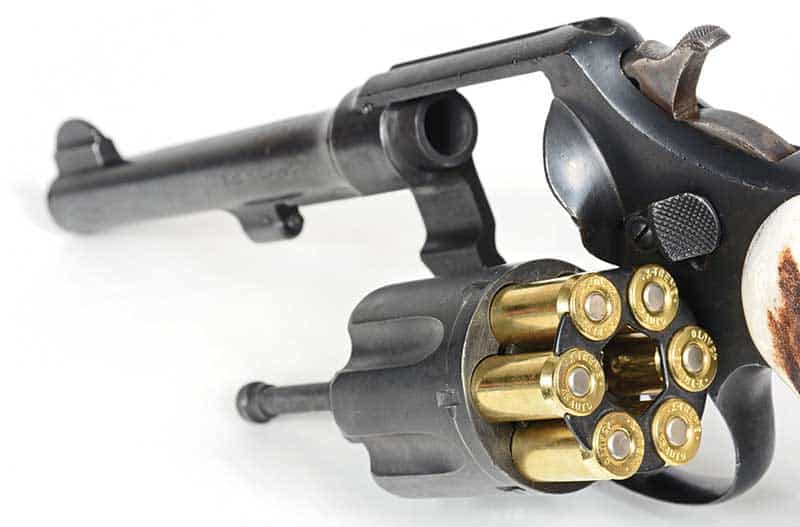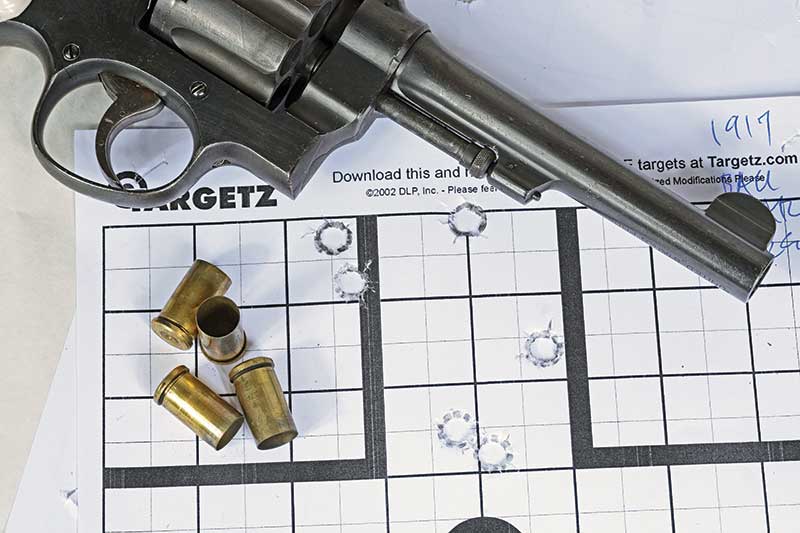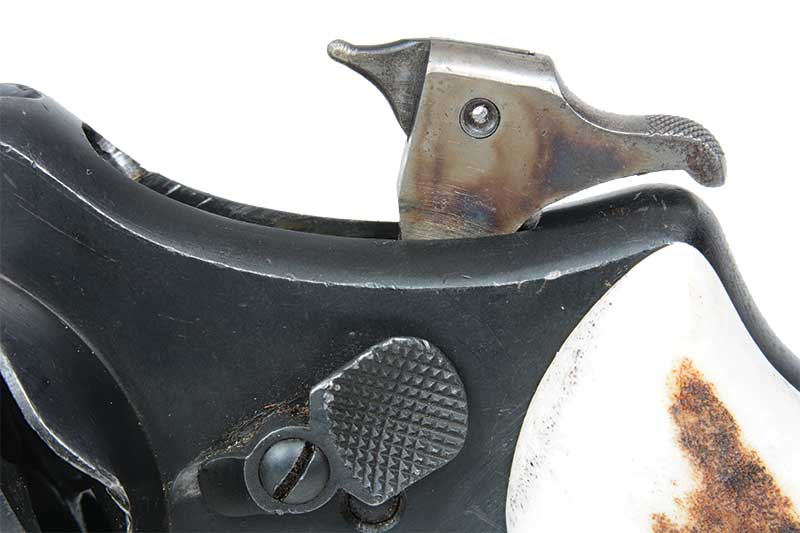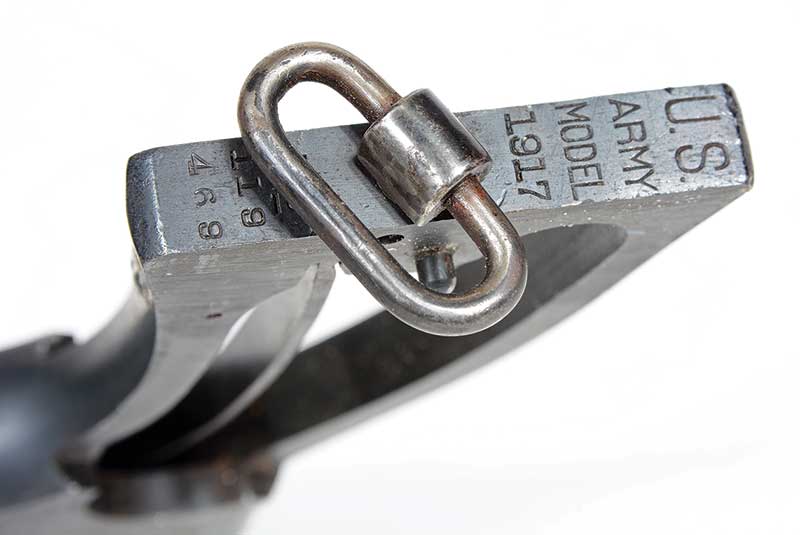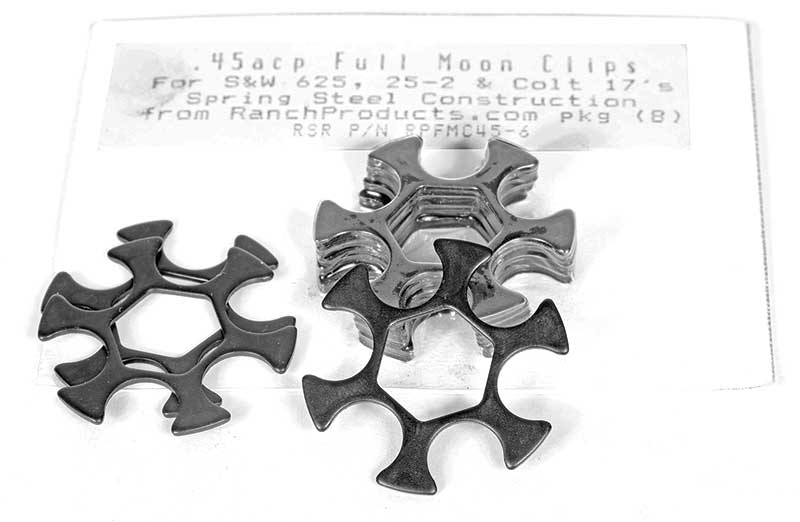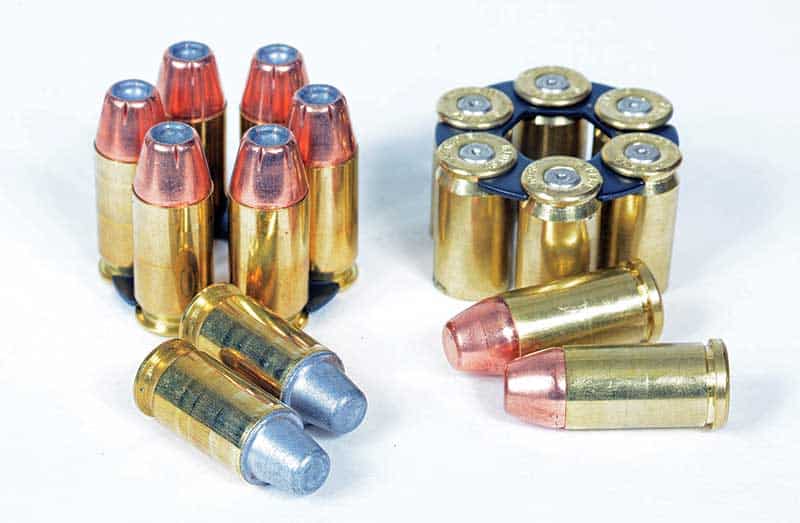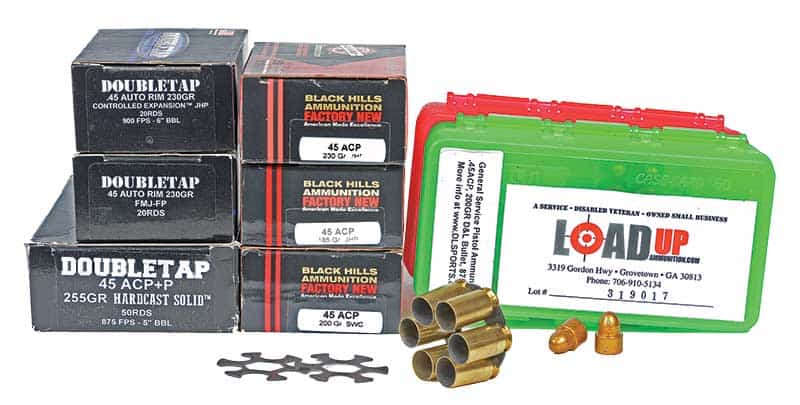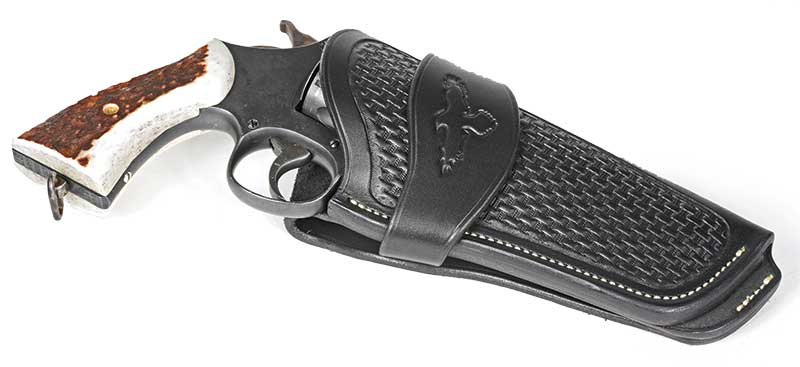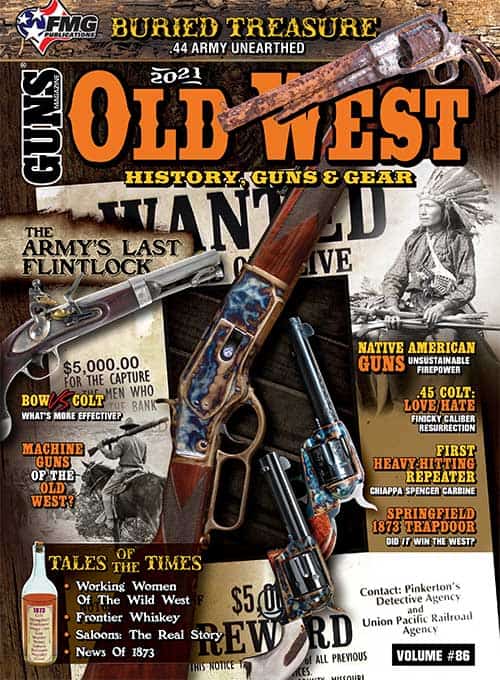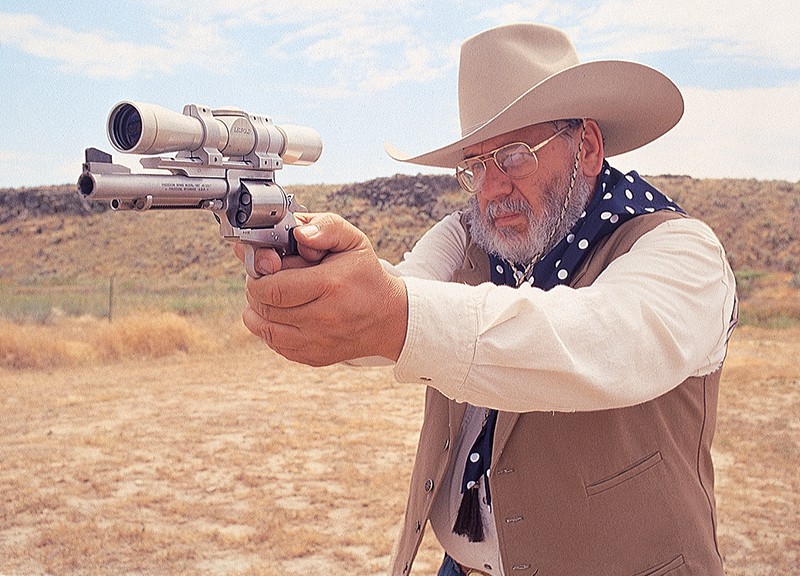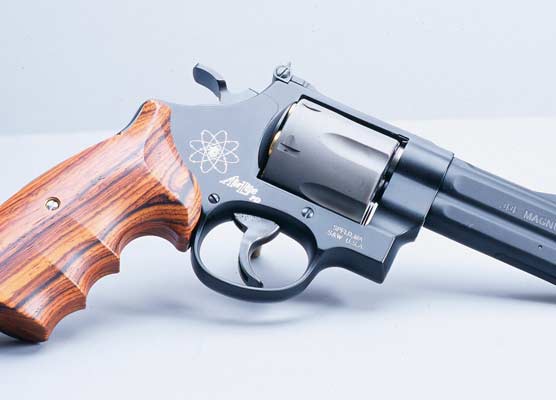The West's Twilight:
S&W 's 1917 .45 ACP
Better late than never — and never bettered yet
Two things we tend to forget about the West: not all the guns were single-action Colts, and the Wild West lasted well beyond the late 1800s. While the Peacemaker is the revolver in all the movies, Smith’s Model 3 “Schofield” was reportedly used by Jesse James, Billy the Kid and an Earp or two. Buffalo Bill Cody carried a Remington .44, and by the time of his death, John Wesley Hardin had taken to carrying newfangled double-action revolvers, a .41 caliber Thunderer and a Lightning .38.
Nor were all gunfighters tucked away in Boot Hill before the 20th century. Cole Younger died in 1916, and Wyatt Earp passed in 1929 at an improbable 80 years of age. Notable shootouts took place all along as the Old West slowly faded into the Prohibition-fueled gangster era of the ’20s and ’30s.
During that long twilight came the 1917 .45 ACP revolver. General John J. “Black Jack” Pershing, who had famously first taken the M1911 .45 into combat in 1916 while searching for Pancho Villa, was commander of the American Expeditionary Force headed for Europe to fight in World War I. While Pershing wanted every soldier to be armed with a handgun, there were nowhere near enough M1911 pistols to go around.
Since logistics argued against using more than one caliber for service handguns, Colt and Smith modified their large-frame double-action revolvers to take the M1911’s new .45 ACP cartridge. Using an S&W-designed spring steel clip to hold the rimless round in place in the cylinder, each “half moon” clip held three cartridges and later full moon clips held all six.
Emergency Designs
Colt’s starting point was its massive New Service, while Smith used the Hand Ejector. The Hand Ejector was so-named because its swing-out cylinder had to be emptied by pushing an ejector rod, as opposed to the automatic ejection of its Scofield and other top-break revolvers.
By this time DA Colts had seen action in the Philippines and S&W’s big sixgun was no stranger to trench warfare. The British had already used the big Hand Ejector in the trenches before the U.S. entered the war. But the Triple Lock-style ejector-rod shroud had been removed to keep mud and debris from collecting in its recess where it could stop the gun from closing.
Both the Colt and the Smith .45 ACP revolvers are called the 1917, and while I dearly love old Colts, the Smith makes the more persuasive argument, at least to me. Not only does the Smith weigh some 4 oz. less — yes, a quarter-pound — its action is easier to repair than the old-style Colts. The Colt, while rugged, can be devilishly hard to get back into “time.”
The Smith also comes with a unique pin-and-detent holding the cylinder in the open position for reloading, shrewdly hidden in the crane where it’s protected from mud and debris. Necessary? No, but it’s a very clever feature, especially for a gun intended for military use and far more likely to be reloaded under stress than a civilian gun. Thanks in part to the tapered barrel with its attractive taper near the front ring of the frame, the 5 1/2″ barreled N-Frame feels surprisingly lively in the hand. The rest of the gun is exactly what you’d expect from a modern Smith, from its concave, checkered cylinder latch to the case-hardened hammer and trigger.
The 1917’s moon clip was groundbreaking. While we’ve seen advances in material and manufacturing since then, I’m not sure modern big-bore fighting revolvers have much to offer over the 1917. Other than incremental improvements like better sights and a slightly simplified version of the same mechanism, it’s all about the same. Ever marvel at how fast Jerry Miculek can reload a wheelgun? Thank the 1917.
A Project
My personal S&W 1917 came without grips but was otherwise in good shape. It had all the appropriate dents and scratches of a century-old gun, but the bluing was in good shape, all the numbers matched and the trigger and hammer both retained some color from the case-hardening process. Since the 1917 is an N-Frame, finding aftermarket grips is not difficult, though minor manufacturing changes through the years mean they may fit with varying degrees of precision.
The prominent lanyard loop and its swivel also mean Magna or other style grips overhanging the bottom of the frame will not fit without substantial — and unsightly — modification. Although I was able to find reproductions of the smallish original-style grips, actual originals are scarce so instead I turned to Eagle Grips.
Founded almost 50 years ago by Harbans Singh, father of current owner Raj Singh, Eagle offers the full panoply of grip materials including its proprietary Kirinite. For the 1917, though, I chose American elk, not only giving it a distinctively Western look, but also providing added purchase over smooth grips but without the abrasion of sharp checkering. I’ve used Eagle’s elk grips before on a Detonics CombatMaster .45 and a .45 Super Government Model, both of which are a handful to shoot — neither of which is pleasant with checkered grips.
Since legal changes have seriously limited the availability of Sambar stag as a grip material, Raj Singh searched for several years for an adequate replacement with the same “bark” and look as stag. He settled on elk. In addition to being selective with the quality of antler used (Eagle takes about 1% of the antlers available), they’re selected carefully to match the shape of the antler to the model of pistol. The grips bolted on without fitting, and the creamy white and reddish-brown bark much improve the looks of the otherwise flat black pistol.
The Chambering
While the 1917 is intended to be used with moon clips, they’re not required, except for early Colts. They had the chambers bored too long to headspace the short .45 ACP. In all others, you can simply drop the cartridges directly into the cylinder. The gun will fire, but since there’s no rim for the extractor to catch, you’ll need a stick, expendable fingernail or the extractor groove of another cartridge to pull the fired cases out individually.
Fortunately, moon clips are easy to find, and the advent of six-round full-moon clips makes the original three- and two-shot styles less desirable. California Competition Works offers tools to load empty clips and de-moon the fired cases, and you’re well advised to buy both. Loading clips is hard on the fingers and removing spent cases is virtually impossible without a tool. Interestingly, a 1911 barrel can be used as a field expedient to pry them out sideways.
In an unusual example of creating a cartridge around a pre-existing firearm, shortly after World War I the Peters Cartridge Company created the .45 Auto Rim specifically for 1917 revolvers. Exactly what it sounds like, the .45 AR is a rimmed version of the .45 ACP letting you shoot the 1917 without clips. Early loads included 230-gr. ball as well as a 255-gr. cartridge essentially the moral equivalent of an early .45 Colt. It’s fitting, since it looks like a .45 “Short” Colt.
One of the advantages of a revolver is you can shoot bullet profiles that don’t ordinarily feed well in an auto. I shot quite a few different shapes of bullets, including three soft-shooting 200-gr. loads using variants of the Dave Lauck designed D&L bullet, including one optimized for revolver use. I shot the D&L bullets in factory cartridges by Load Up Ammunition and handloads I assembled on a Dillon 550.
I also fed the 1917 a range of bullet weights from Black Hills, including 185-gr. JHPs, 200-gr. SWCs and 230-gr. JHPs. DoubleTap provided two loads in .45 AR, a flatpoint FMJ and JHP both in 230 grains. They also supplied my personal favorite load for the 1917, a stout +P .45 ACP shooting a hard cast 255-gr. SWC. While everything else felt quite sedate out of the big N-Frame, the heavy 255 made the long barrel whip in recoil.
Even given the narrow, tapered fixed sights I was able to put six rounds into just under 3″ at 25 yards with my hands rested. I got about 4″ standing, shooting from a modified Weaver. Not bad for a gun designed to be shot across a trench.
Good Leather Too
Every good pistol should have a holster matching its intended use. For my 1917, I reached out to Mike Barranti of Barranti Leather Co. While a Myres Belt Scabbard or Mexican double-loop style would have been more period-correct for the 1917, I selected the later Brill style. Finished in black with white stitching, Barranti’s Ranger is a faithful interpretation of the A.W. Brill-style holster down to the stamp he uses for the basket weave. Since the 1917 is headed to Gunsite with me in a few short weeks, he kindly stamped the cuff of the holster with the Gunsite raven.
Maybe while I’m in Arizona I’ll carry it when I drop by the grave of Big Nose Kate, Doc Holliday’s longtime girlfriend. After all, she was alive until 1940.
For more info:
www.barrantileather.com
(412) 860-4804
www.black-hills.com
(605) 348-5150
California Competition Works
www.demooner.com
www.dlsports.com
(928) 636-1726
www.doubletapammo.com
(435) 383-3208
www.eaglegrips.com
(800) 323-6144
www.ranchproducts.com
(313) 277-3118

Get More Revolver Content Every Week!
Sign up for the Wheelgun Wednesday newsletter here:
